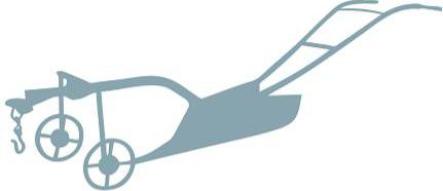Grounds & Exhibits
The Pioneer Museum's forty acres of landscaped
campus also includes certified wetlands. The Conecuh River runs parallel behind the scenic boardwalk. Shady wooded trails offer visitors opportunities to enjoy the natural heritage while twenty-two unique historical structures and macro artifacts foster cultural appreciation.
Listed below are micro-descriptions of select structures.
The Dogtrot Cabin
This cabin was built by Thomas Madison in Pike County around 1830 and contains a split log structure. This “dog trot” style cabin housed several families before being moved to the Museum in 1972. The cabin’s particular style of architecture was ideal for long hot summers of Alabama, and the hall separating the two parlors or rooms functioned as a built in air conditioner by providing a merciful draft. This hall was how the cabin became known as a “dog trot.” In the winter it allowed the dogs to remain safely inside and out of the rain and snow, and in the summertime it allowed them to find much needed shade.
Because the center dogtrot is covered, the wide center hallway was also the ideal place to sit in the evenings when the heat of the day had passed, and the passageway was also a practical place for hauling firewood and water into the cabin. With no doors attached to the structure, it was a simple task to haul fresh water to a nearby water barrel that sat inside the passageway near the entry to the kitchen area, and firewood could also be neatly stacked along one wall in the passageway. This effectively kept wood out of the rain and ready to use for cooking or warmth.
Split Rail Fence
Because it was much easier to gather logs cut from trees that had been cleared from the land, split rail was the most common type of pioneer fence installation. As a new farm or community would form, the land often had to be cleared and pioneers would split logs lengthwise to create wood for fences.
Split rail fences had many benefits over other kinds of fences for pioneers. For example, they could be built on hard ground, they could be erected with only a few tools, and they contained a simple construction. Split rail fences also did not require nails, which were hard to find during the pioneer days. Due to this fencing's simple design and minimal requirements for fence materials, pioneers across the South preferred this type of fence for use and durability.
The Tenant House
Farm tenancy is a form of lease arrangement whereby a tenant rents, for cash or a share of crops, farm property from a landowner. Different variations of tenant arrangements exist, including sharecropping, in which, typically, a landowner provides all of the capital and a tenant all of the labor for a fifty percent share of crops. The growth of state tenant farming reflected a national trend, and in the late 1800s twenty-five percent of American farmers operated as tenants. Tenants would often travel where the work was located and moved on average once every three years.
This house was typical of tenant architecture for this area of the country. There was only one 15' x 16' room that served as a kitchen, living room, dining room, and bedroom for an entire family. The roof was originally covered in wood shingles and the walls were papered with newspapers, some of which date back as far as the Spanish American War. The walls were often covered in the current newspaper or cardboard by tenants to keep the house insulated.


